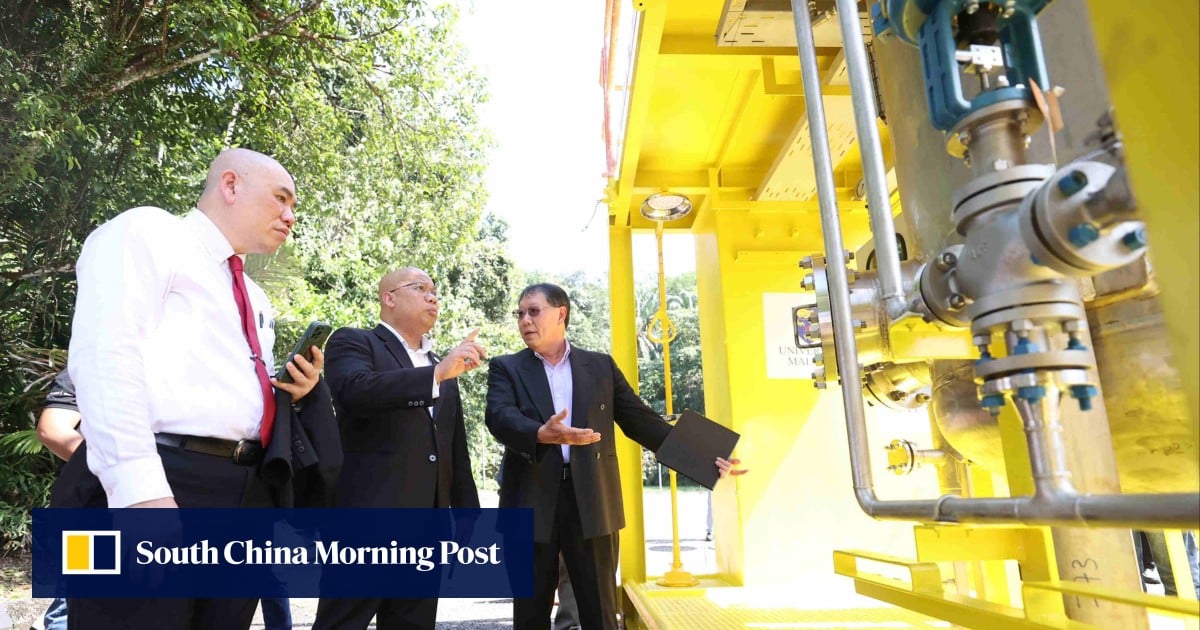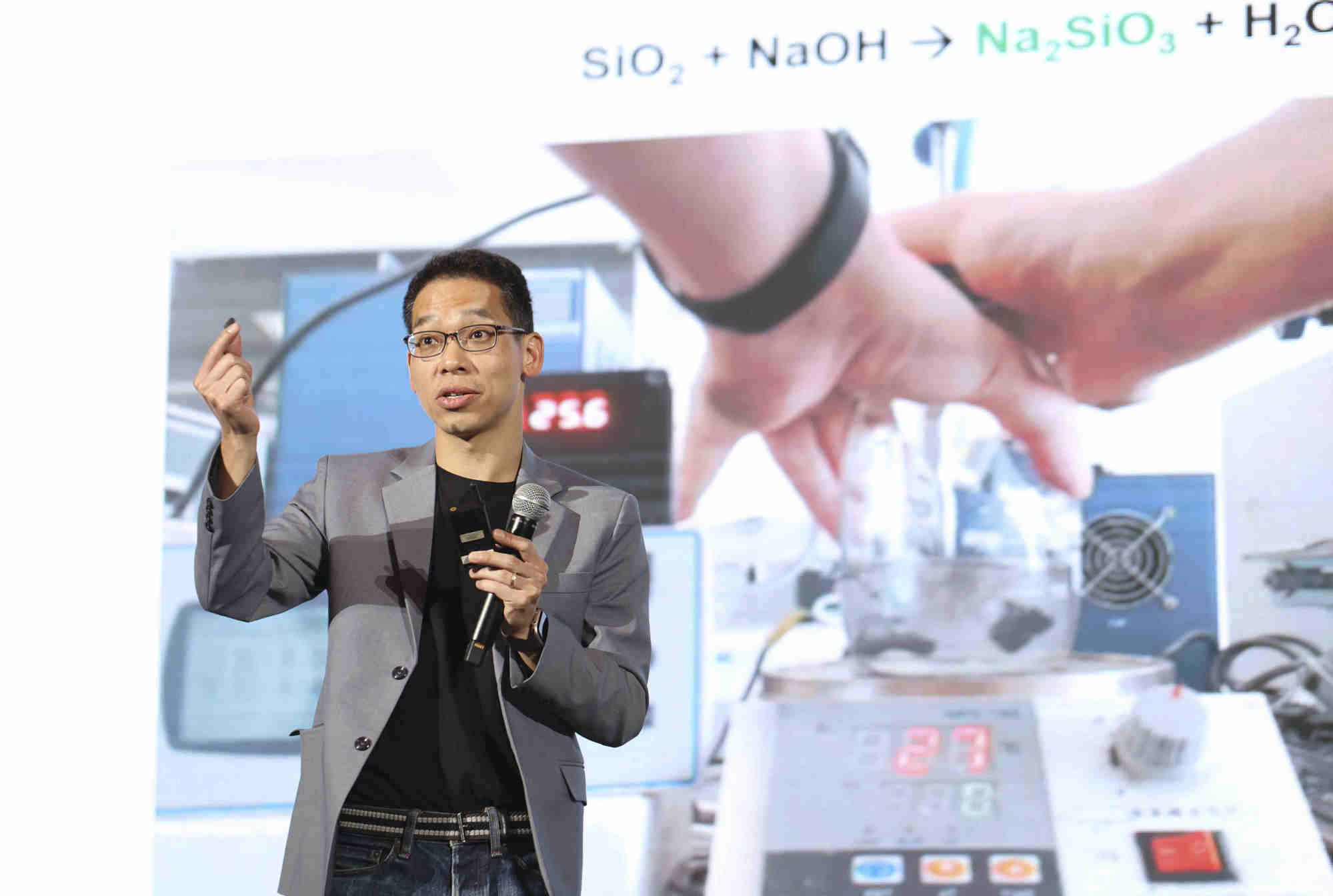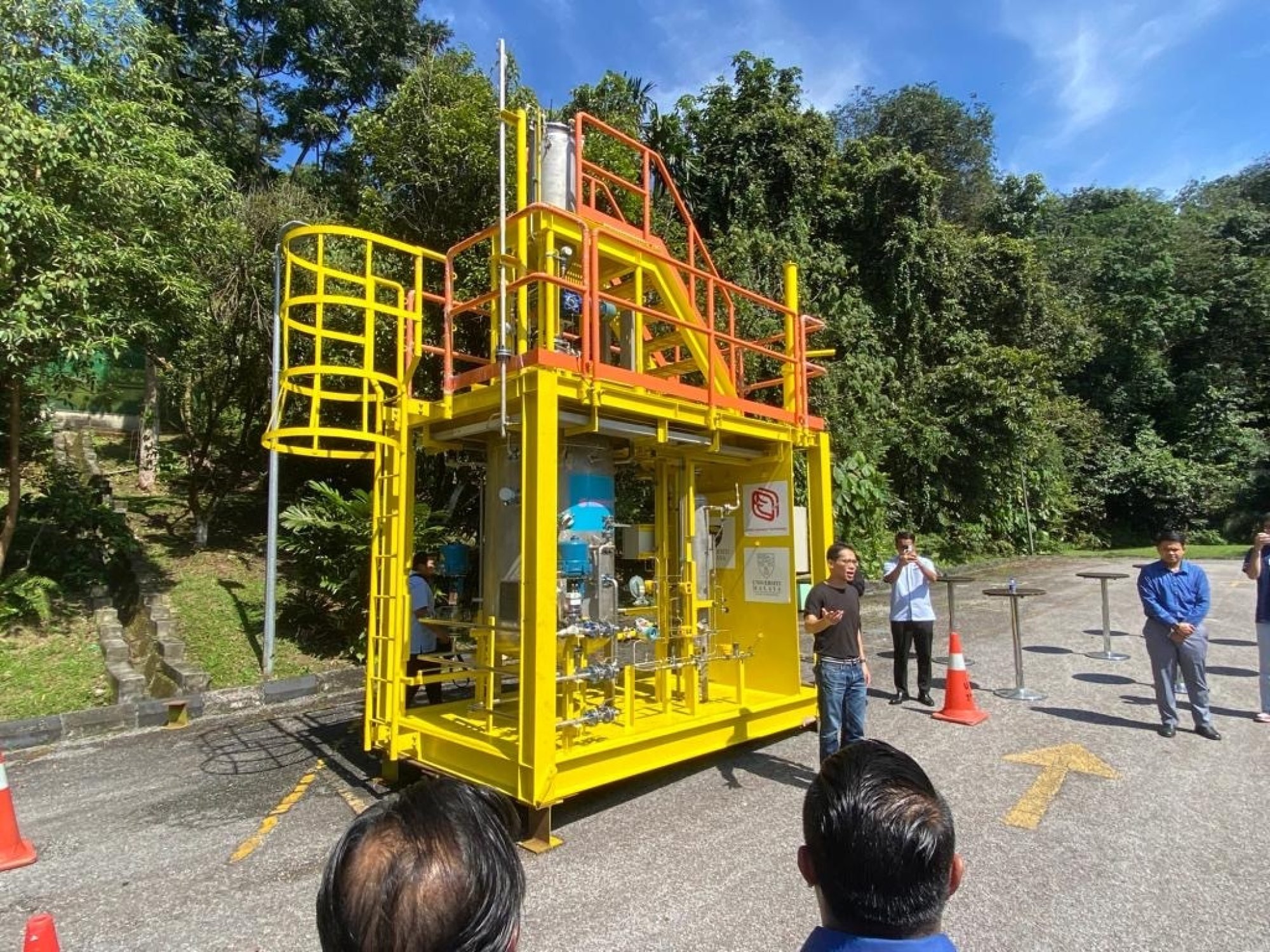
07 Jan Hong Kong renewable energy firm brings benefits of green hydrogen to Malaysian university
“This will provide a whole new circular economy and make hydrogen more [easily] available as it can be produced on site,” he said.

Currently, most hydrogen is produced from fossil fuels like coal or natural gas, but the carbon footprint from its production can be substantial. “Green” hydrogen, the cleanest form, is produced using electrolysis using renewable energy, which is expensive as the supply chain is being built.
EAT’s first silicon-fuelled Macera Si+ hydrogen genset was unveiled at Universiti Malaya last month to replace diesel-based generators, which are widely used in building construction and serve as backup power units for commercial buildings and data centres among others.
“The culmination of our joint enterprise is the creation of the first-ever silicon-fuelled hydrogen genset, a revolutionary technology poised to redefine energy standards,” Noor Azuan Abu Osman, Universiti Malaya’s vice-chancellor, said at the project’s launch on December 13.
The project is the result of three years of intensive research and partnership, and “stands as a testament to our dedication and expertise”, he said. “The hydrogen genset represents a significant leap in green technology, offering an environmentally friendly alternative to traditional diesel gensets.”
EAT’s collaboration with Universiti Malaya includes replacing the university shuttle buses that currently run on fossil fuel with electric buses, said Osman.

The Macera Si+ hydrogen genset has a capacity to generate up to 10 kilowatts of electricity per hour, using a solution of Si+, water and sodium hydroxide as fuel, according to Lau.
Details of the hydrogen refuelling station capacity will be decided in due course, Lau said.
The energy within the nano-pores of Si+, which can be stored in powder form, is not released until introduced to the basic solution, said Lau, adding that it is the world’s first distributable long duration energy storage material at grid scale.
Si+ can be stored and transported in containers, Lau said, adding that a standard 20-foot equivalent unit container of the material can produce up to 2.5 tonnes of hydrogen.
Lau said the factories to produce Si+ can be sited, for example, in Saudi Arabia, where there is excess energy generating capabilities, enabling that energy to be stored in solid-state form and shipped anywhere in the world.
Hydrogen has way to go before it emerges as a truly green fuel
Hydrogen has way to go before it emerges as a truly green fuel
“This eliminates the biggest problem of storing and transporting [hydrogen].”
The “cradle-to-gate” carbon footprint in the production of hydrogen through the use of Si+ can become “carbon negative”, said Lau. This means more carbon dioxide is removed from the atmosphere than is emitted, when recycled silicon from end-of-life photovoltaic panels is used as raw material, he said.
The footprint can reach minus 20kg of carbon dioxide equivalent per kg of hydrogen produced when using recycled silicon, Lau added.
Silicon can be easily transported as well as converted into hydrogen and further to electricity through the genset, according to Wey Yang Teoh, an associate professor of engineering at Universiti Malaya.
“In other words, the technology allows the redistribution of renewable hydrogen or energy throughout the world in a safe, practical, and efficient manner,” he said. “This is the biggest bottleneck in the implementation of the global hydrogen economy.”
